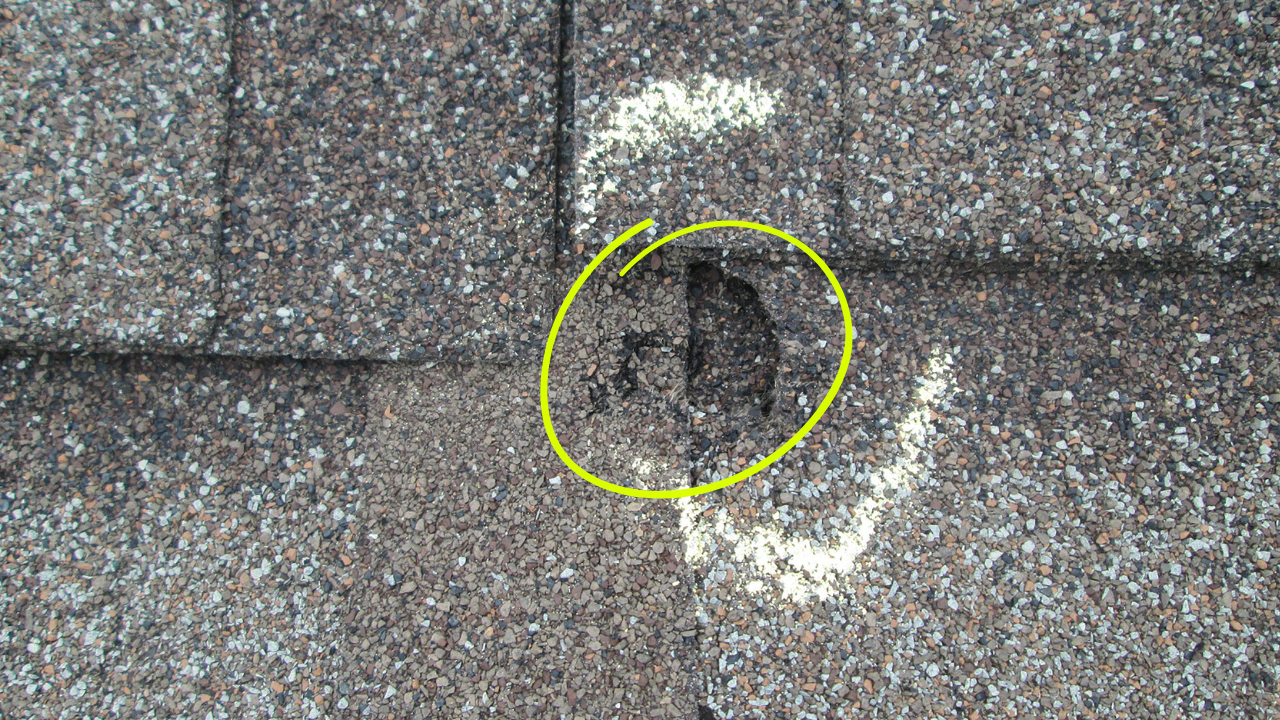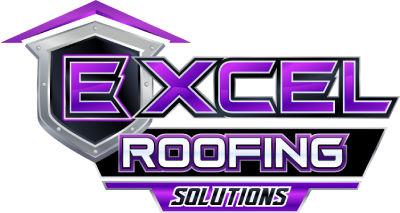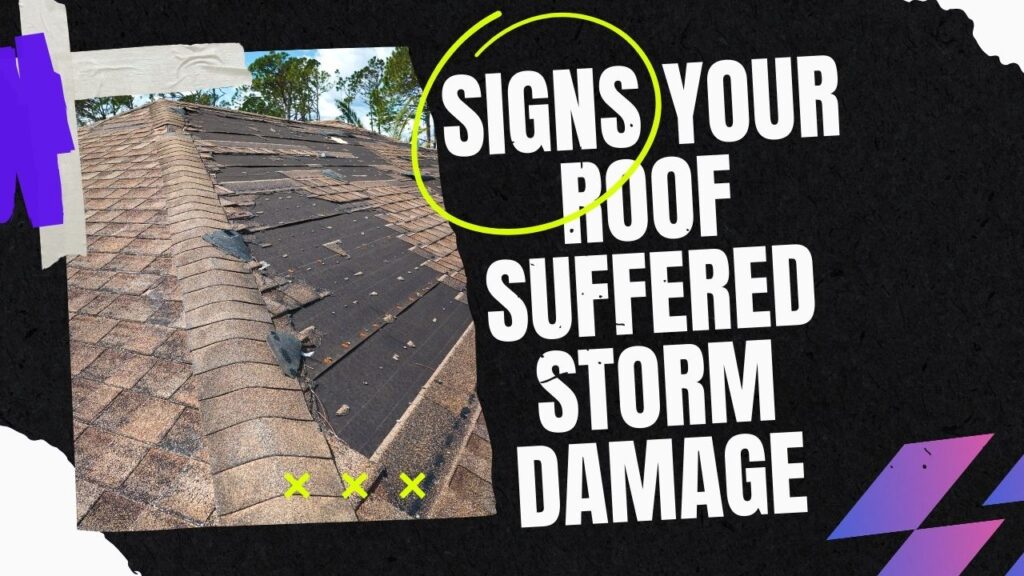Was your roof damaged in a storm? Excel Roofing Solutions may be the perfect pick to help repair your roof. Many times, storm damage to a roof may be evident after it has subsided, but other times the damage isn’t as apparent. In the past, the Triad has been home to some of the most violent storms in the US, capable of damaging a perfectly good roof in a matter of minutes. However, what makes matters worse is you can’t predict the damage caused by a storm. For instance, a category 4 storm can sometimes cause less damage than a Category 3 or 2, for that matter. That said, what’s important is that you get immediate Triad storm damage roof repair by trusted professionals.

Types of Roof Storm Damage
Wind
Hurricane-force winds, which are classified by meteorologists as 74 mph or greater, or gale-force winds, which are between 39-54 mph, can cause visible damage to your home’s roof. High winds can remove or tear shingles, leaving the underlayment, roof deck, or waterproofing material exposed to the elements.
During less severe storms, sudden, sharp gusts of wind can lift and curl shingles. When shingles are installed, they’re purposefully overlapped to create a water-tight seal, and this lifting and curling can break this seal, potentially leaving your roof vulnerable to damage from wind-driven rain.
Hail
While hail storms tend to be relatively short, and rarely last for longer than 15 minutes, hailstones can leave dents or pockmarks in shingles and knock shingle granules loose. This can be problematic because these granules help protect your roof against rain and sun damage. Hail damage can also ruin the pleasing aesthetic appearance of your roof’s surface.
Standing Water
Roofs without proper drainage can experience problems with standing water after big rainstorms, especially in uneven areas. Clogged gutters can also cause backed up rainwater under your shingles, which allows moisture to potentially penetrate the underlayment or the roof deck.
Debris
Depending on how severe the storm was, debris can end up on the top of your roof, everything from small branches to larger tree limbs. Large objects can dent or impact the surface of the shingle, leaving that area of the roof vulnerable to moisture intrusion, whereas lighter branches may not be as much of a problem.
STORM DAMAGE FAQ’s
How to tell if roof damage is from a storm?
- Missing Shingles.
- Visible Granule Loss.
- Visible Water Infiltration.
- Loose Debris.
- Missing or Hail-Damaged Shingles.
- Clogged or Broken Gutters and Downspouts.
- Leaks inside the home
- Damaged Gutters
- Damage to Soft metals
- Damage to Roof Supports or Accents.
What should you look for in a roof after a storm?
When examining an asphalt-shingle roof, look for loose, broken or cracked shingles. Look for any bubbling or blistering in a shingle, as that indicates moisture has made its way to the interior of the shingle. A shingle with any damage should be replaced immediately to avoid leaks or further structural damage.
How can you tell if you have wind damaged shingles?
Potential signs of wind damage:
Missing shingles. Thin horizontal lines where granules have been worn off about 1-2 inches beneath the shingle above; this could indicate that the shingle seal was broken and the shingle was flapping in the wind rubbing against the shingle above it.
In most cases, a roof inspection is required to qualify for a roof warranty. It’s not uncommon for them to require a yearly inspection, and they’ll need another one after it takes on weather damage. Depending on your insurance company, calling a roofer before them can save you time and money.
What does hail damage look like?
Hail can take a toll on your roof shingles. Certain types of shingles have granules, and a hailstorm can knock them onto the ground. You might also notice bruises and blemishes on your roof. In serious cases, you could even come across cracks and holes, which could in turn contribute to leaks, water damage, and mold. If you notice any signs of hail damage, call your roofing professional.
If a homeowner suspects damage, who should they contact first?
A homeowner should call a reputable roofing contractor first. At Excel Roofing Solutions, we provide a free roof inspection. A project manager will make an appointment to visit your home and mark up the areas on the roof that are caused by storm damage.
ROOF STORM DAMAGE CHECKLIST
Contact a trusted, professional roofing contractor to schedule an inspection and help you with damage assessment. Excel Roofing Solutions offers free inspections and our experts know how to safely look for roof damage.
- ROOF
Visually assess your roof by walking around the perimeter of your house and taking note of any visible storm damage. You might also have a good view of parts of your roof from one of your windows. Keep a list of notes and/or take pictures — this can potentially be helpful later for insurance purposes. Any visible signs of storm damage should be documented, such as dented, torn, curled, or missing shingles.
- GUTTERS, VENTS, AND WINDOWS
Check for dents on your home’s gutters and roofing accessories, such as gable vents and other overhangs. Windows should be inspected for cracks, broken glass, loose weather-stripping, and torn screens.
- OUTSIDE AREAS
Walk around your home’s exterior and look for fallen tree limbs, missing fence posts, or damage to lawn furniture and other decorations. Flat surfaces, such as patios and decks, can be checked for hail damage.
- ATTIC AND CEILINGS
Observe these areas for leaks and water spots. While your home’s roof might appear undamaged on the exterior, wind and hail can cause unseen leaks that may lead to bigger problems later. Ceilings, light fixtures, and your attic should all be inspected for water leaks and spots. Use a flashlight to see in dark areas.
- HIRE A DEPENDABLE, TRUSTED ROOFING CONTRACTOR
It’s important to work with a contractor you can trust. Roofers and repair companies are likely to be busy after a large regional storm and may try to compete for your business by offering discounts or deals. If it sounds too good to be true, it probably is.
A good roofing contractor can:
- Assess your damage with a professional eye
- Provide an estimate on repair costs
- Replace or repair your roof
CALL US TODAY FOR YOUR FREE STORM DAMAGE ROOF INSPECTION
Even if you don’t see any visible signs of damage, it may be a good idea to have an expert take a look at the roof after a storm. Our roof repair team specializes in inspecting roofs for storm damage, which can save you from extensive damage if done the very next day. Repairs in time can prevent water from penetrating the roof leading to damage in the attic and other parts of the home.
Don’t take any risks with your roof; call us to schedule a storm damage roof inspection in the Triad today. (336) 221-4121


